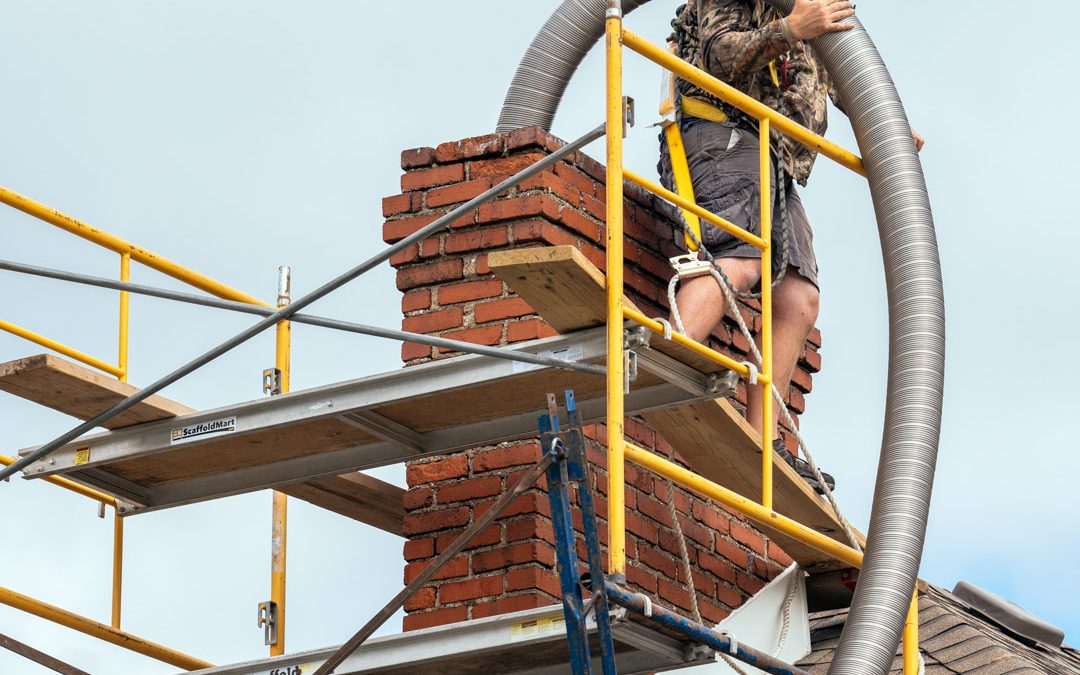
by sunshine | Apr 16, 2024 | Mercer County Chimney Sweep
There are three different types of chimney liners: clay tile chimney liners, cast-in-place liners and stainless steel flue liners. What type of liner is best depends on when and why it is installed.
Stainless Steel Relining
A clay tile liner is a good choice when you are building a new fireplace because the materials are inexpensive, and the liner will have a long life. It is not a good choice for a replacement liner. It is incredibly challenging and expensive to install a new clay tile liner or repair an old one after the chimney has been built.
A stainless steel liner is the best choice if you have a prefabricated fireplace or are installing a fireplace insert. It is easy to install and can be connected directly to your heating appliance. It is also the most likely to meet state and local venting requirements for your new appliance.
A Cast-in-place liner is the best choice if you have a masonry fireplace with a clay tile liner that is failing or if you have a chimney with structural problems. We recommend AHRENS Chiming Lining. The cast-in-place chimney lining is made with an insulated mortar-like mixture that is perfect for filling in deteriorating mortar joints and reinforcing the chimney’s structure.
Stainless Steel Relining
We offer a large selection of flexible chimney liners, such as 316Ti Rock-flex Stainless Steel Multi-fuel liners, Smooth wall, Pre-insulated, Oval, square and rectangle. Install a round or rectangular 316 grade stainless steel liner replacing your old terracotta clay flue tiles. All components are high quality stainless steel and made in the USA, UL Certified, and have Lifetime warranties. Our liners are code compliant for masonry chimneys. There are 4 reasons why a chimney specialist would recommend a new liner:
- The clay tile liner is damaged or deteriorating
A damaged flue liner is a safety risk because gaps and cracks in the liner can allow carbon monoxide and hot embers to escape from the chimney. This increases the risk of carbon monoxide poisoning and a house fire. A deteriorating liner may also be a symptom of greater structural damage that could increase exponentially if nothing is done. Installing a new liner is the simplest and best solution.
- The chimney has a condensation problem
If flue temperatures are too low, it can cause condensation in the flue which contributes to corrosion. It is also a symptom of poor airflow which will result in inefficient fires that produce less heat and generate more creosote buildup.
- The fireplace has been converted to burn a different fuel or you’ve had a fireplace insert installed
Whether you have converted a traditional wood-burning fireplace into a gas fireplace or had a wood-burning fireplace insert installed, you need to have a new liner installed. Different types of fuel and fireplace inserts have different venting requirements than traditional fireplaces. In most cases, it is necessary to have a metal flue liner installed that connects directly to the new appliance.
- The chimney is unsafe
If your chimney does not have a liner or the liner is warped, corroded or deteriorating, a new flue liner should be installed to protect your home.
If you have any other questions, leave them in the comment section below! If you want to speak to a chimney specialist, give us a call!
Contact us
If our CSIA Certified Chimney Sweep determines that your chimney needs swept, we will take the utmost care to keep your living space completely clean. Proudly Serving Mercer County, Somerset County, Hunterdon County, & Surrounding Areas.
St John Chimney Sweeps Address 1613 Reed Rd D1, Pennington, NJ 08534
Website http://www.stjohnchimneysweeps.com/
Email: stjohnchimneysweeps@verizon.net Phone Number: (609) 737-0133
Modern Chimney Sweeps
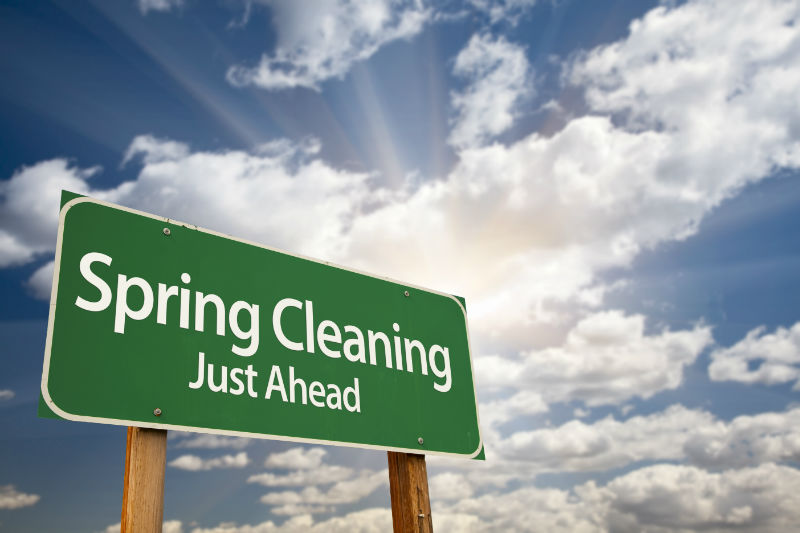
by sunshine | Mar 12, 2024 | Mercer County Chimney Sweep, NJ Chimney Inspection
When’s a smart time to have your chimney cleaned? For one, it’s when you’re not actively using your chimney, putting the decision to have it swept in the spring or summer seasons. However, you’ll come to know that the earlier you have your chimney swept, the better—for many good reasons.
Spring clean your chimney
Imagine that it’s cold out, snowing sideways, and you’ve spent the entire winter day looking forward to gathering around your fireplace that night. When you go to use it, you realize there’s something wrong. Suddenly, your beloved fireplace is out of commission for weeks until you can get a professional to have a look. Being proactive in caring for your chimney means never having to deal with this situation.
Protect your chimney
Damaged flue liners, billowing smoke, cracked masonry, and dangerous fumes—these are all problems that can be spotted during a normal chimney inspection, and having your chimney cleaned will bring any issues forward for analysis. After all, you wouldn’t take your car on a long road trip without having its oil changed first, would you?
Get Rid of Buildup, Nests, and Pests
During the winter, animals burrow, build nests, and find shelter from the cold weather. That shelter could very well mean your chimney. Having your chimney cleaned in the spring can clear out any nests, debris, and blockages. All of these blockages contribute to greater, more hazardous issues like constricted airflow or chimney fires.
Why clean in the springtime?
With nicer weather, animals don’t need to hunker down in your warm chimney as often. Still, without a chimney cap, your chimney is subject to debris and potential blockages even in the spring, summer, or the fall. When you have your chimney cleaned in the spring, your chimney professional will recommend installing a chimney cap to prevent debris from becoming a problem. They’ll install a cap if it’s needed, too. Now, when you go to use your fireplace in the cooler weather, you won’t have to worry about your chimney being obstructed with your chimney cap’s protection.
No More Fireplace Odor
You know that smell. The one that drifts through the house, a mix of chemically smelling soot that lingers around the mouth of your fireplace. That’s the buildup of the residue known as creosote in combination with soot. The smell is noticeable when the chimney isn’t in use, which makes spring and summer months the time of the year when you’ll start smelling this odor.
Having your fireplace and chimney professionally cleaned means immensely reducing this odor that wafts through your house. You can say goodbye to smelly fireplaces that stink up your living areas and a more important bonus—you’ll rid the chimney of dangerous creosote buildup, which if there’s a significant presence, can cause a chimney fire and toxic air pollutants.
Repairs
Warmer weather is better, chimney cleanings and inspections reveal any problems your chimney may have. While the most basic of these issues can be resolved on the spot like creosote buildup, installing a chimney cap, and giving a chimney the cleaning it needs, there are other problems that demand a lot more attention. A damaged liner or flue needs to be addressed as soon as possible. It’s much better to have this work done when spring rolls around because you won’t be exposing your house to the cold outside temperatures. Even though chimney professionals can work in all conditions, it does make it easier and safer to address chimney issues when the roof isn’t slippery with ice or covered in snow.
Exterior masonry repairs
Although, if your chimney needs exterior masonry repairs, it is important to get this taken care of during the warmer months. Once the temperature begins dropping masons will not be able to complete these repairs without jeopardizing the integrity of the chimney.
Chimney Sweep Availability
Professional chimney sweeps find themselves particularly busy in the fall. It’s the season where homeowners are thinking about the looming winter months, the cold it will bring, and the fires that they’ll have to stave off the weather. It doesn’t take very long for chimney sweeps to have a fully booked schedule. Being proactive about your chimney’s cleanliness and health means getting a chimney sweeper to conduct an inspection and cleaning early on.
You’d be surprised about the lead times in the fall months. Making sure there’s plenty of opportunity to have this crucial job done before then can protect your chimney from experiencing serious issues before you light that fire and protect your family from the dangerous, sometimes fatal, fumes and combustion byproducts.
Spring clean your chimney
Safety and Protection Spring cleaning isn’t just for getting the dust bunnies out of your house or finally washing your windows. It’s about cleaning and caring for all the critical features your house has, and the chimney and fireplace should be at the top of the list. Improper care of chimneys can mean toxic fumes like carbon monoxide leaking into your living spaces, sometimes undetected, and putting you and your family at risk. It means problems that are neglected that could worsen your chimney’s integrity if not reckoned with right away.
When you put cleaning your chimney at the top of your spring to-do list, you can resolve and prevent major chimney issues. We’ve dedicated ourselves to making sure your home is safer and cleaner after we’ve completed every project.
Contact us
St John Chimney Sweeps Address 1613 Reed Rd D1, Pennington, NJ 08534 Proudly Serving Mercer County, Somerset County, Hunterdon County, & Surrounding Areas
Website http://www.stjohnchimneysweeps.com/
Email: stjohnchimneysweeps@verizon.net Phone Number: (609) 737-0133
Two Different Chimneys
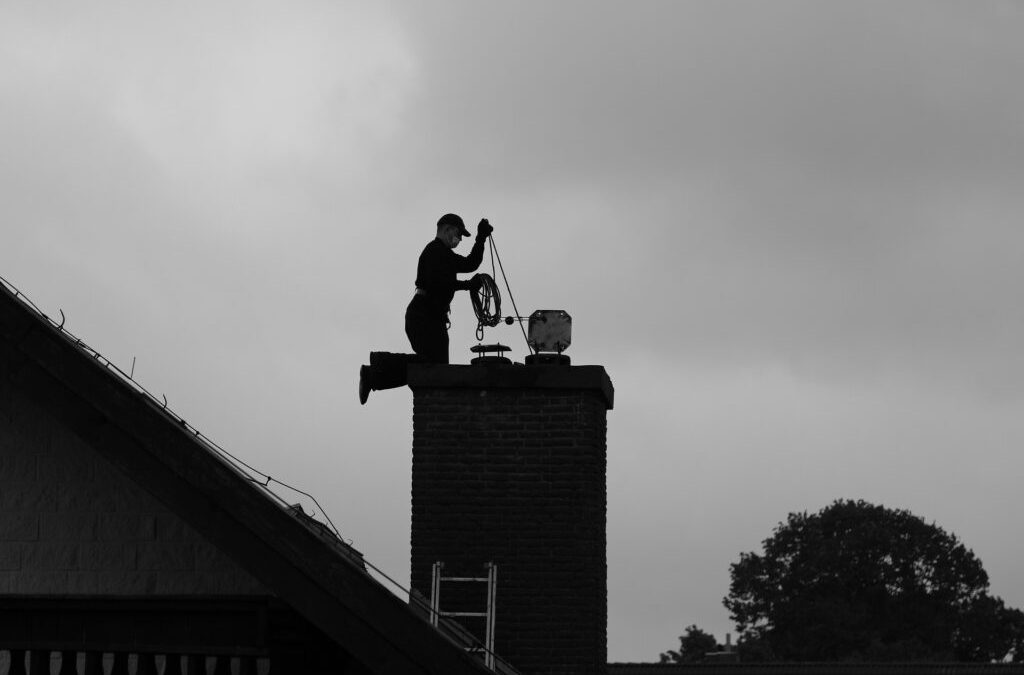
by sunshine | Feb 12, 2024 | Mercer County Chimney Sweep
It’s curious how some people react when I tell them I’m a chimney sweeper. ‘Oh really? Do they still exist?’… is the type of reaction from this minority. I guess that’s because it’s such an ancient trade and they tend to think of Victorian chimney sweeps or Old Bert from Mary Poppins. It can surprise them that sweeps are still engaged in work. These people tend to fall into two categories: those who don’t have an indoor fire, or those who do have an indoor fire but don’t realize chimneys need regular sweeping.
Modern Chimney Sweeps
The simple fact is that chimney cleaners, or rather sweeps, belong to a profession that’s entirely relevant to the modern age, especially when everyone is so concerned about climate change and air pollution.
Chimney sweeping is proven to benefit the environment by ensuring that flues are efficient for consumption. That means harmful gas is able to leave safely and, as long as the consumer is burning dry wood at a high burn rate, the most efficient use is being made of the wood as a fuel energy source. The sheer numbers alone in my client contact book shows that chimney sweeping is definitely an in-demand and contemporary trade.
Professional
A modern chimney sweep should look entirely professional. A tradesman such as St John’s Chimney Sweep who has completed a number of chimney sweep courses with a trade body such as the Guild of Master Chimney Sweeps. Chimney sweeps do look different these days. We use vans, not horses and carts; power sweeping brushes or fit-for-flue sized manual brushes, not old mops; CCTV not boy or girl sweeps; proper overalls not 19th century sooty clothes; and we are accredited with proper trade organizations, not drinking pals at the local tavern!
Chimney sweeping has developed over centuries and its current evolved form is a highly respected profession, which involves fire and carbon monoxide gas risk safety assessment, reliable sweeping methods and sound recommendations on related matters such as bird’s nest removal, chimney flue repairs, and wood burner efficiency.
Chimney flues need to be kept clean to stop risks of carbon monoxide via flammable soot clogging up the inside of the structure. You also want to avoid bird nests, which can be dangerous for consumers by blocking the flue. And the appliance itself needs to be maintained properly and in good working order.
Contact us
St John Chimney Sweeps Address 1613 Reed Rd D1, Pennington, NJ 08534 Proudly Serving Mercer County, Somerset County, Hunterdon County, & Surrounding Areas
Website http://www.stjohnchimneysweeps.com/
Email: stjohnchimneysweeps@verizon.net Phone Number: (609) 737-0133
Two Different Chimneys
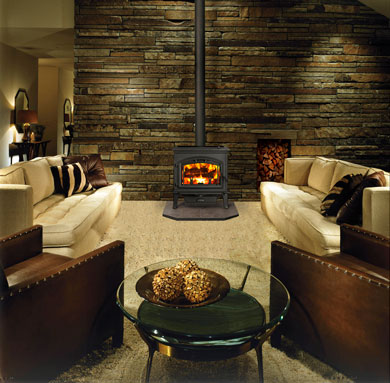
by sunshine | Jan 18, 2024 | Mercer County Chimney Sweep
If you haven’t lit your fireplace yet this season, it’s only a matter of time. Right now, the most popular question our chimney sweeps are being asked is, “How can I tell if my chimney or fireplace needs cleaning?” After all, you don’t want to schedule a chimney cleaning service if you don’t need one, but you also don’t want to put your family and home in danger of a fire.
Signs that your chimney needs to be swept
While unattended fires are the main cause of fireplace-centered house fires, fireplaces that aren’t properly and regularly maintained and serviced fireplaces are a close second. Make sure your fireplace and chimney are inspected annually, preferably in fall or the beginning of winter to check for any obstructions from animal nests during spring and summer. That being said, if you recently moved into your home, you may want to schedule a chimney and fireplace inspection any time of year.
Whether you are a heavy or light fireplace user, the signs that your chimney needs cleaning aren’t always crystal clear since you can’t easily see inside it. Here are seven tell-tale signs that indicate your chimney or fireplace needs cleaning:
Your fireplace smells like a campfire. You detect the smell of burned wood coming from the fireplace even when it isn’t lit.
Fires burn oddly. When you light a fire in your fireplace, it just doesn’t burn as well as it once did.
It takes more effort to get a fire going and keep it going. It’s more difficult to get a fire started, which might be because your chimney is clogged, and airflow is restricted. Fire requires oxygen.
Smoke fills the room. Even with the flue open, smoke from the fireplace waifs through the room.
The fireplace damper is black. A black damper indicates creosote buildup. Creosote may appear as a buildup of soft and flaky soot. In more advanced stages, it condenses into a hard, shiny substance that clings to surfaces in a tar-like fashion.
Fireplace walls have oily marks. You notice oily spots on your fireplace’s walls, also a sign that creosote is present.
There’s evidence of animals. You hear animal noises coming from your chimney or see signs of animal nesting (which can be trickier to do if the nest is inside the chimney). Birds and squirrels are the most common culprits for making homes in your chimney.
If you’re experiencing any of the signs listed above, you know it is time to schedule your fireplace and chimney cleaning. However, what if it’s been a while since you had it cleaned and you don’t see any glaring signs? How often you need to clean your chimney depends a great deal on how much you use it.
How Often Should You Get Your Chimney Cleaned?
There are two schools of thought from leading organizations. According to the Chimney Safety Institute of America (CSIA), your fireplace and chimney need to be cleaned when there is 1/8″ of creosote and/or soot buildup inside the chimney liner. The National Fire Protection Association (NFPA) promotes annual chimney cleaning no matter how often you use it.
We recommend once a year chimney cleaning for wood burning fireplaces. Some homeowners schedule service for spring, but the majority schedule right before cold weather sets in so that the chimney is cleared of any nests or debris.
Gas fireplace chimneys need to be cleaned, too. Gas fireplace chimneys should be inspected and cleaned annually. Gas fireplaces won’t accumulate any soot or creosote in the chimney since you are not burning wood, but any animal nests and debris might still be present.
Chimney and Fireplace Cleaning is Dirty Business
Cleaning fireplaces and chimneys is a dirty business, which is why most homeowners hire chimney sweeps. Not only is it dirty work, but chimney cleaning is best left to the experts to ensure it’s done correctly. Look for chimney sweeps who are credentialed by the National Chimney Sweep Guild or the Chimney Safety Institute of America, like St John Chimney Sweeps.
Contact us
St John Chimney Sweeps Address 1613 Reed Rd D1, Pennington, NJ 08534 Proudly Serving Mercer County, Somerset County, Hunterdon County, & Surrounding Areas Website http://www.stjohnchimneysweeps.com/ Email: tact usstjohnchimneysweeps@verizon.net Phone Number: (609) 737-0133
Two Different Chimneys
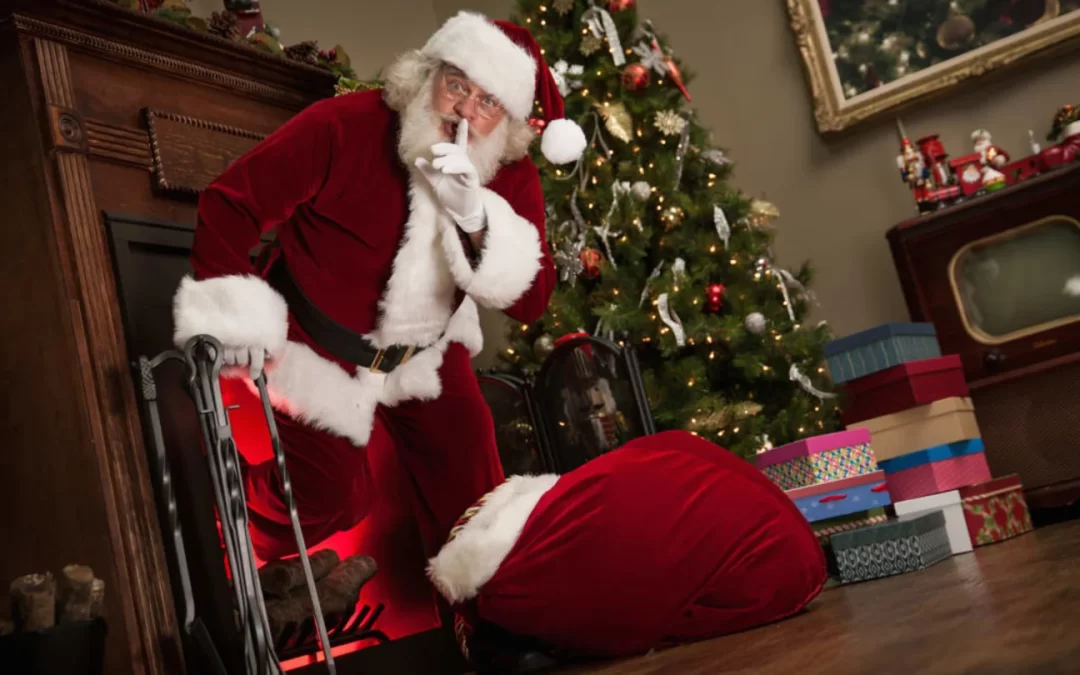
by sunshine | Nov 15, 2023 | Mercer County Chimney Sweep
Is your chimney ready for the arrival of Santa Claus? A clean and clear chimney may be as important to Santa Claus as homemade sugar cookies and milk. With the following three steps, you will ensure a Santa-Claus-friendly chimney and also help to protect your home and family from potential danger.
Chimney Cleaning
Chimney sweeping is an important way to create the right environment for Santa, especially if you have a wood-burning fireplace. Flammable creosote is deposited in the chimney lining every time there’s a wood fire. The tar-like substance builds up over time. When chimney cleaning is neglected, creosote can even create a chimney obstruction. This results in a smoky fireplace that exposes the family to toxic fumes.
Annual chimney cleaning is recommended by the National Fire Protection Association (NFPA). Other leading fire safety experts recommend chimney sweeping once the creosote has built up to 1/8”. If you use your fireplace frequently, you may need to schedule chimney cleaning in the middle of winter.
When experts clean your chimney, you don’t need to worry that the sooty gunk will make a mess in your home. A special vacuum and proven procedures are used to ensure that while your chimney flue is being cleaned, your home stays the way chimney professionals found it when they arrived. You just need to move delicate items and things like Christmas stockings from the immediate area before the experts arrive.
Chimney Inspection
The fire safety experts agree that chimney inspections should be scheduled annually. Without an inspection, there may be debris in your chimney. Of course, your chimney isn’t Santa-Claus-friendly if the jolly old elf gets tangled up with tree limbs or encounters a frightened or dead animal in the chimney. Thousands of chimney-related fires occur every year, and a significant percentage of them happen because of chimney blockage that results in out-of-control chimney fires.
A chimney inspection is also the best way to discover whether the flue lining is intact. If there is any damage whatsoever, the liner must be repaired or replaced. Otherwise, the home is vulnerable to exposure to deadly toxic fumes and a dangerous, quick-burning house fire.
Burn Seasoned Wood
Seasoned firewood is the only kind of fuel that’s safe to use for fires in a wood fireplace or wood stove. “Seasoned” means that the wood has a low moisture content of 20% or below.
It takes firewood anywhere from six months to a year or more to dry out sufficiently. If you’re in doubt about the amount of moisture in your firewood, you can invest around $20 to get a moisture meter.
Seasoned wood burned in a properly functioning fireplace or wood stove burns cleaner than green wood, which leaves excess creosote in chimney liners. If you burn green or unseasoned wood, the liner will be more clogged with creosote and Santa Claus may just leave you a lump of coal in your stocking.
Contact us
St John Chimney Sweeps Address 1613 Reed Rd D1, Pennington, NJ 08534 Proudly Serving Mercer County, Somerset County, Hunterdon County, & Surrounding Areas
Website http://www.stjohnchimneysweeps.com/
Email: stjohnchimneysweeps@verizon.net Phone Number: (609) 737-0133
Tips for Preventing Chimney Fires
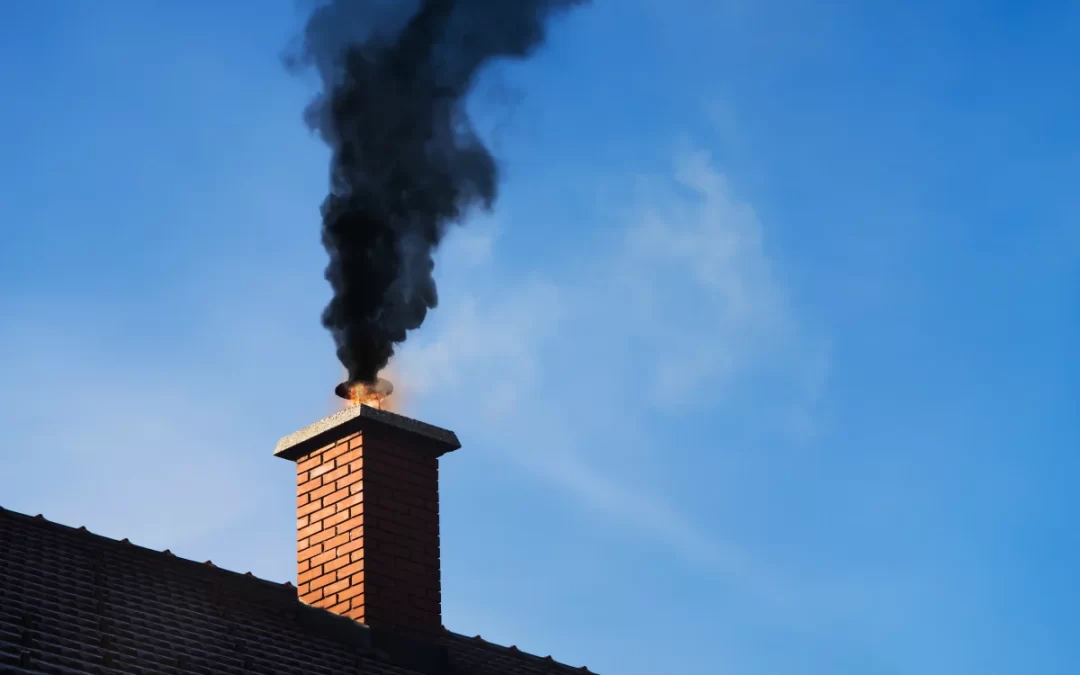
by sunshine | Oct 19, 2023 | Mercer County Chimney Sweep
Around New Jersey, we encounter many older homes where furnaces vent combustion gases into chimneys. In theory, this is ok. The furnace exhaust is hotter than the surrounding air. Once inside the chimney, noxious fumes, including carbon monoxide (CO), rise to the top and dissipate into the great outdoors. No problem, right? Well… yes. It can be a problem.
Two Different Chimneys
Imagine two different homes, each of which has a furnace that vents into a chimney.
The first home contains a mostly internal chimney. Nearly all of the chimneys are contained within the home and, therefore, inside the building envelope. The only exception is the part at the very top, just above the roofline. This chimney also contains an interior metal liner that ties in seamlessly with the furnace’s exhaust pipe.
Now consider another home where the chimney contains clay and mortar liner. It’s an external chimney, so three sides of the chimney reside outside the home. Compared to the chimney in the first home, this one has more exposure to outdoor temperature fluctuations because it’s not located inside an insulated space.
Backdraft
During the winter, the chimney in the first home stays as warm as the home’s living room. When hot combustion gases enter the chimney, they don’t lose much heat – they’re still hotter than the surrounding air. That being the case, they easily vent out of the chimney and away from the home. The metal liner also ensures a seamless connection between the exhaust pipe and the chimney itself.
Not so with the other chimney! Since it’s largely exposed to the elements, the chimney stays cold all winter long. When the furnace exhausts into the chimney, the gases quickly cool off before exiting to the outdoors. They can’t all rise to the top of the chimney, so some of them backdraft through the vent pipe itself and enter the home’s crawlspace. Not good
Hazards
In our “tale” above, it’s clear that the first chimney is the better option from a safety standpoint. However, in the real world, things aren’t always so cut and dry.
Some people have exterior chimneys that have been retrofitted with metal liners. Others have interior chimneys with masonry liners. And so on. All kinds of scenarios are possible.
If your furnace vents into a chimney, a combustion safety test is the only way to be sure that combustion gases aren’t backdrafting into your home. And while you should have a carbon monoxide detector in your home, waiting for it to go off is not a good strategy – especially since it might not respond to chimney leaks.
It’s better to preempt danger, not wait for it to arrive. Here’s when you need to hire a pro to perform a combustion safety test for your furnace-to-chimney situation:
- You’ve never had it tested before. If your furnace vents into a chimney and you’ve never done a combustion safety test, it’s a good idea to get one. That’s especially true for external chimneys since they stay colder during the winter and are more prone to exhaust-related problems than internal chimneys. Older clay-and-mortar liners are also subject to damage and deterioration that can lead to inadequate venting of furnace exhaust.
- You see white corrosion on your furnace vent pipes. More often than not, this means you’ve got a back drafting problem. When the combustion gases stay inside the vent pipe or are forced back into it before escaping the chimney, you’ll see corrosion on the metal – usually at the elbows.
Don’t panic if either of these situations applies to you! Assuming you’re sitting here, reading this, and still breathing ok, you’re probably going to be just fine. However, it’s a good idea to schedule a combustion safety analysis pronto so you can find out for sure if there’s anything dangerous going on.
Solution
Let’s say you’ve got a furnace-to-chimney backdrafting problem. What now? One solution is to install a strong, metal chimney liner that’s unlikely to crack or corrode. You can tie it into your furnace exhaust pipe and reduce the potential for CO to backdraft into your home.
Another fix is to upgrade to a closed-combustion furnace (90% AFUE or higher). This fix often makes sense if you’ve got a really old furnace or a big external chimney that stays cold throughout the winter. These high-efficiency units use PVC pipes to pull air in for combustion and vent the by-products outdoors. Your furnace won’t exhaust gases into your chimney anymore. Instead, an HVAC contractor will install the system to expel the exhaust directly outside your home.
Gas Water Heaters
In some homes, gas water heaters also vent into chimneys. These should be tested as well – especially if you see melted (or melting) plastic grommets on the side of the water heater. That’s a sign that hot gases are back-drafting toward the unit.
A backdrafting water heater is arguably an even bigger problem than a backdrafting furnace. After all, furnace exhaust leaks are only a risk when the furnace is operating. Water heaters operate all year round, so you’re at risk even during the summer!
If you find out that you have a problem with a backdrafting water heater, you’ve got two options:
- Install a chimney liner. If applicable, installing a chimney liner inside your existing chimney might fix the problem.
- Get a new water heater. Tankless gas water heaters have dedicated exhaust pipes that won’t vent into your chimney. New electric water heaters are also much more efficient than the ones that were available several years ago. The most efficient water heaters on the market, heat pump water heaters, are powered by electricity and require no combustion to heat your water!
Carbon Monoxide Poisoning
You probably don’t have a problem with carbon monoxide, but it’s a good idea to be certain.
Chimney liner problems, along with cracked heat exchangers, are among the most common sources of CO leaks. The only way to be sure you don’t have a problem is to have a pro perform combustion analysis.
When properly designed, a chimney-vented furnace is ok. Regardless, you should verify whether the design is sound and that it hasn’t been compromised in any way throughout the years. A true combustion safety inspection with a combustion analyzer is best.
Clean Chimney
Many homeowners wrongly think cleaning their chimneys will save them money, but doing so can be extremely dangerous for untrained people. Therefore, a professional chimney sweep will keep you and your family safe by lessening the possibility of a chimney fire.
Contact us
St John Chimney Sweeps Address 1613 Reed Rd D1, Pennington, NJ 08534 Proudly Serving Mercer County, Somerset County, Hunterdon County, & Surrounding Areas
Website http://www.stjohnchimneysweeps.com/
Email: stjohnchimneysweeps@verizon.net Phone Number: (609) 737-0133
Blog






